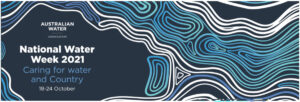
Australia is the driest populated continent on Earth, and yet it uses more water per person than most other countries in the world.
Of all earth’s continents, only Antarctica gets less precipitation than Australia
Australia’s average annual rainfall of just 470mm is also unevenly distributed: Darwin receives around 1,700mm while Adelaide gets less than one-third of this—some inland towns survive on less than 200mm.
From 1996 to 2010 the Millennium Drought scorched much of southern Australia. Its effects were acutely felt in the agricultural heartland of the Murray-Darling basin and in the densely populated southeast and southwest. Major cities including Perth, Adelaide, Canberra, Sydney, Brisbane, and even Tasmania’s famously wet state capital of Hobart, experienced serious water shortages.
But more rain isn’t always the answer.
Australia’s floods can be equally extreme with tropical cyclones and storms bringing intense bursts of rainfall that overwhelm drainage systems and cause devastating damage.
Human activity has also made matters worse.
As a nation, we could not exist without taking water out of the natural environment and using it for domestic and productive purposes.
Per person, we use more than all other countries of the Organisation for Economic Co-operation and Development except New Zealand, Canada and the United States.
Australia has long had a precarious relationship with water, but the extreme weather events of recent decades have forced it to adopt a renewed respect for this precious resource.
So how can we do our part to help reduce both water use and the impacts of stormwater and wastewater on surrounding ecosystems?
Reducing water use- Reducing water use in the home is a simple and easy way to decrease water and energy bills and reduce your household’s environmental impact. Water-efficient showerheads, taps, appliances and toilets can significantly reduce water use. Look for the Water Efficiency Labelling and Standards (WELS) label for water-efficient products.
Rainwater – Collecting and using rainwater can reduce your water bills and help maintain your garden during water restrictions. It can also help to conserve water resources and reduce environmental impacts beyond the home.
Wastewater reuse – Many Australian homes use potable water for practically everything in the house and garden. You can reduce potable water use in the home by treating and reusing greywater and blackwater.
Stormwater – Stormwater is rain that falls on the roof or land. Stormwater that carries soil, organic matter, litter and fertilisers from gardens and oil residues from driveways can pollute downstream waterways. Capturing, storing and reusing stormwater can save potable water and reduce downstream environmental impacts.
Outdoor water use – The principles of water-efficient garden design include choosing plants adapted to the local climate, improving the condition and moisture retention of soil, adding mulch to the garden, and using water-saving garden products and efficient irrigation systems.
Waterless toilets – Toilets that do not require water for flushing can have lower environmental impacts than water-efficient toilets. If designed correctly, they save water and money and avoid disposal of effluent and pollutants into waterways and the general environment.
In recent years a growing public awareness, together with investment in infrastructure, innovation, and conservation, has seen Australia praised for improving its water security.
Despite this, many areas are still suffering and although plans, projects, and technologies have been put in place to mitigate the effects of drought; the question is ‘has Australia done enough?’
Bronwyn Reid | 4t Consultants. 18| 10| 2021
